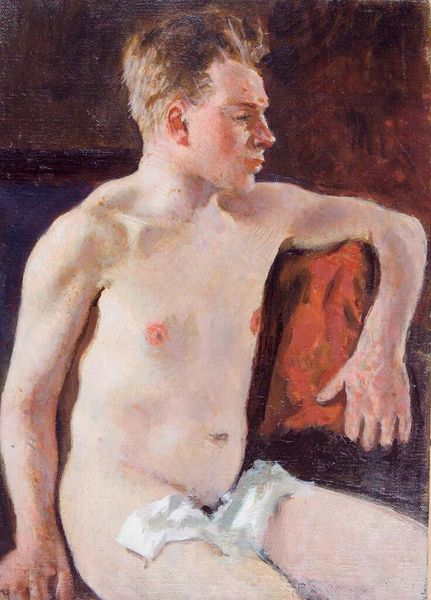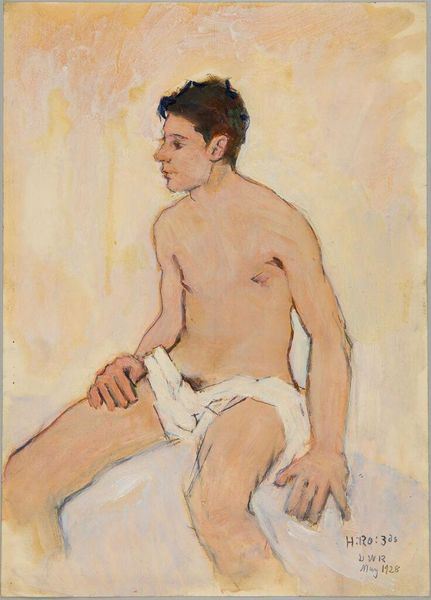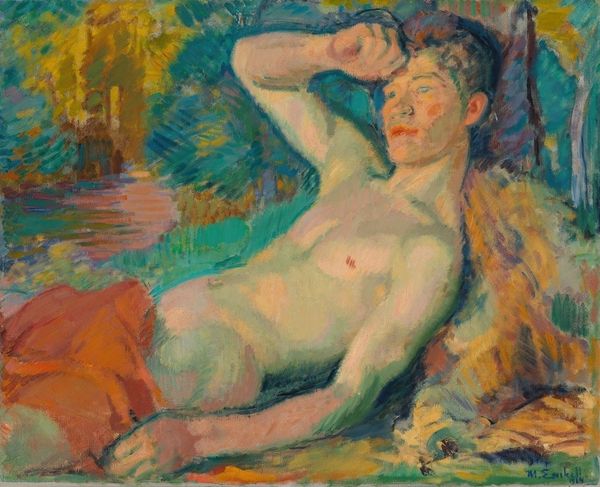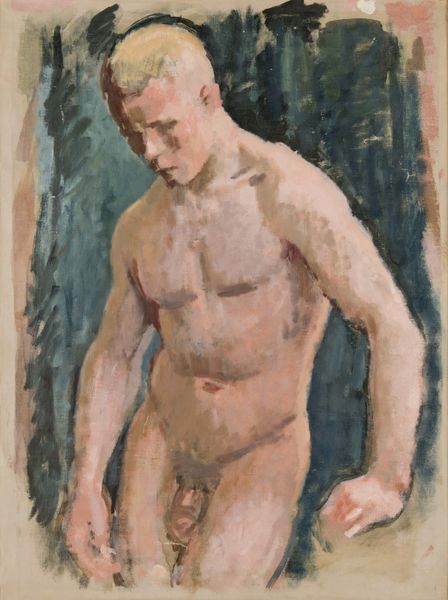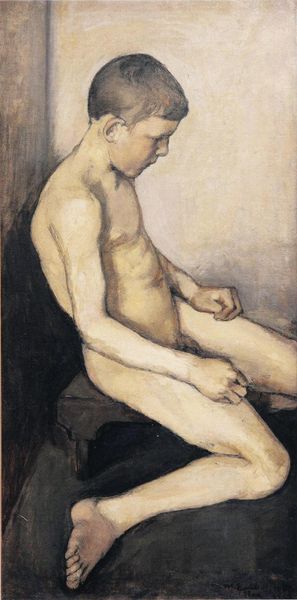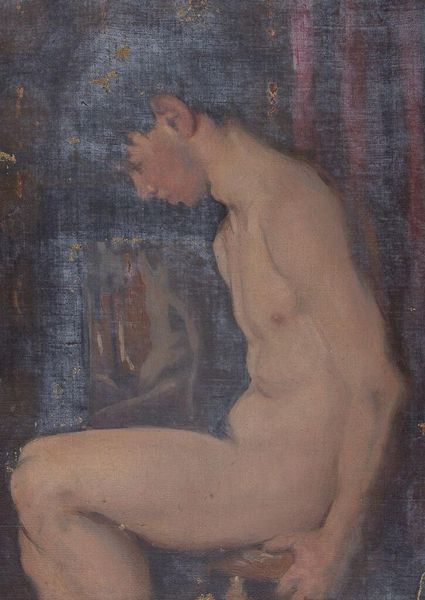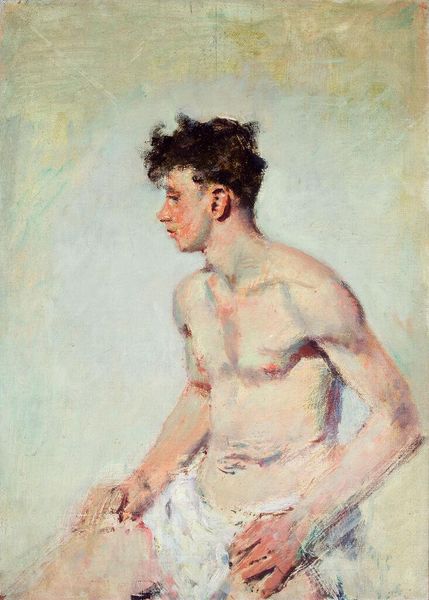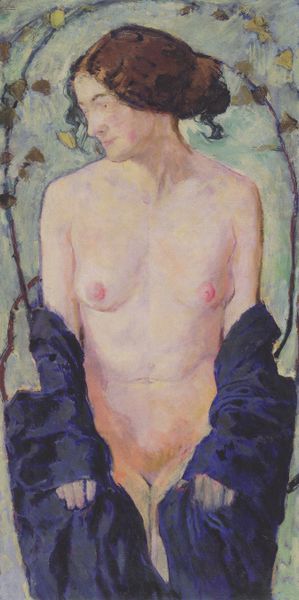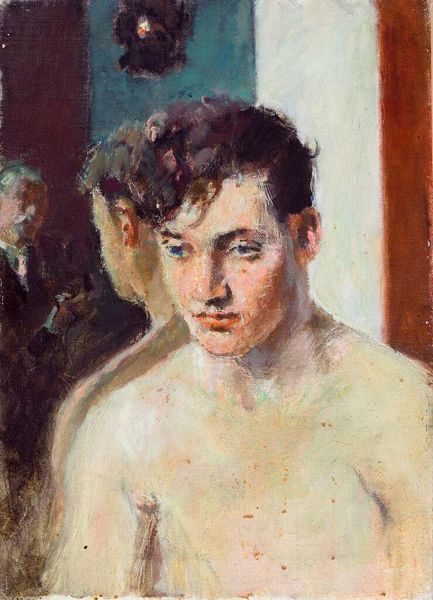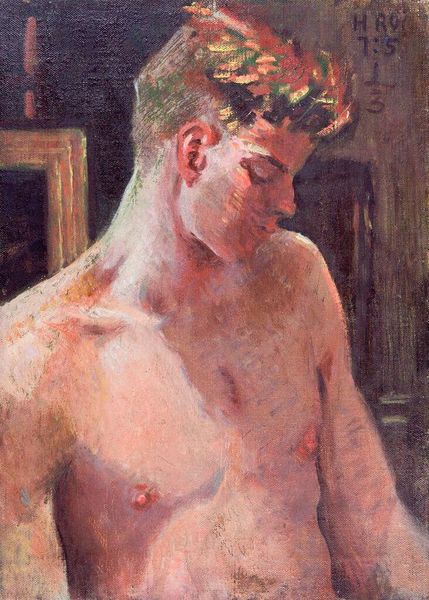
Copyright: Public domain
Editor: This is Magnus Enckell's "Young Nude Male" from 1920, an oil painting. There's a certain dreamy, idealized quality to the figure... what's your perspective on this work? Curator: Well, let's consider the socio-political landscape of 1920. World War I had just ended, leaving a profound impact on societal norms, particularly around masculinity and the male body. Enckell, as a Finnish artist working within a broader European context, would have been acutely aware of these shifts. Do you see how the idealized, almost androgynous portrayal challenges traditional hyper-masculine representations prevalent after the war? Editor: I do, now that you mention it. The figure is muscular, but there is something soft about the lines. It disrupts the classical heroic male nude, right? Curator: Exactly! This painting can be seen as an intervention, a questioning of conventional masculinity. Enckell was openly gay, and during that period, any artwork that deviates from heteronormative representations acts as a quiet act of rebellion, a way to visualize alternative identities and desires within art history. How might Enckell’s identity shape our interpretation? Editor: So, it’s not just about aesthetics but also about subtly pushing back against societal constraints and opening up space for different ways of seeing and being. That’s incredibly powerful. Curator: Precisely. It reminds us that even seemingly simple artistic choices—like how a body is rendered—can be profoundly political when considered within the historical moment and the artist's lived experience. Editor: This makes me see how art serves not just as a record but as a proactive voice, shaping culture and challenging norms. Thanks! Curator: My pleasure! Let's remember, art speaks loudest when we listen critically and empathetically.
Comments
No comments
Be the first to comment and join the conversation on the ultimate creative platform.


